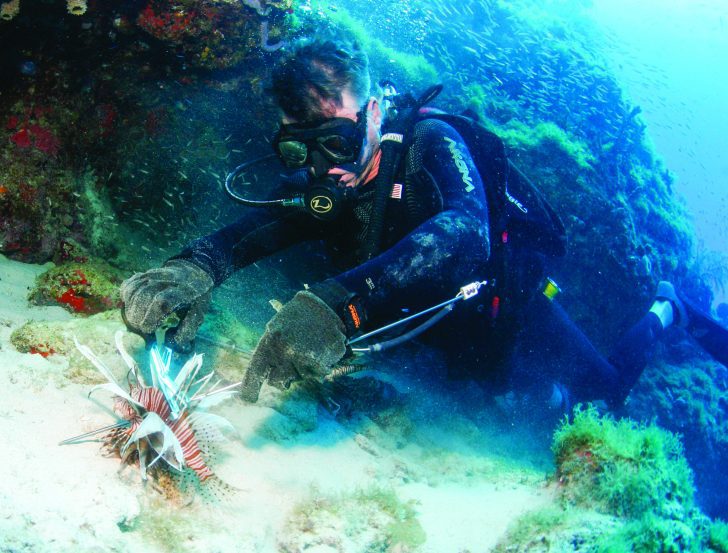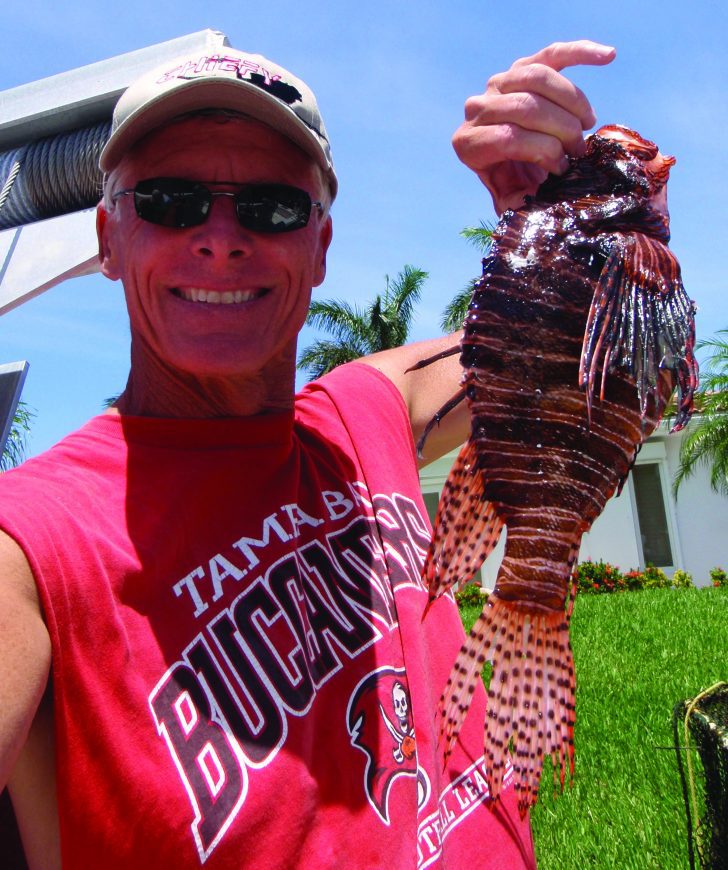By: Capt. Chad Carney
In 2010 I shot my first Lionfish diving in the Tortugas. After stoning him, 6 more of his buddies were trimmed of their 13 dorsal, 2 pelvic and 3 anal venomous spines. I ascended with the last one intact on my sling, which slid down and almost stuck me. Single flopper tips are not good at protecting your hands, even with dive glove. Lionfish are ravenous ambush predators, smart but not about being prey. They have venomous protection, great camouflage, rapid growth, and breed like rabbits. They can wipe out 90% of all life on a single reef. First seen offshore of SE Florida, where hundreds of exotic tropical fish were released. The Lionfish is native to Indo-Pacific and the Red Sea and the infestation has spread throughout the Caribbean, Gulf of Mexico, and way up the Atlantic.

Moderately short polespears with paralyzer tips work very well to shoot and pin lionfish, and easily slip them into a container. Divers just wanting a dinner can cut off the spines with sea snips and string them like any fish. Handling lionfish can hurt but the pectoral fins have no spines so you can carefully grab and hold a lionfish by the nose, then trim away. It’s best to keep lionfish in a separate cooler as well. I’ve still not been stung, after hundreds shot, but people say it’s like a wasp sting. Heat is the best pain relief, with hot water, or heat packs. With popular fish regulations being limited every day, it’s good to have non-indigenous fish as alternatives!

